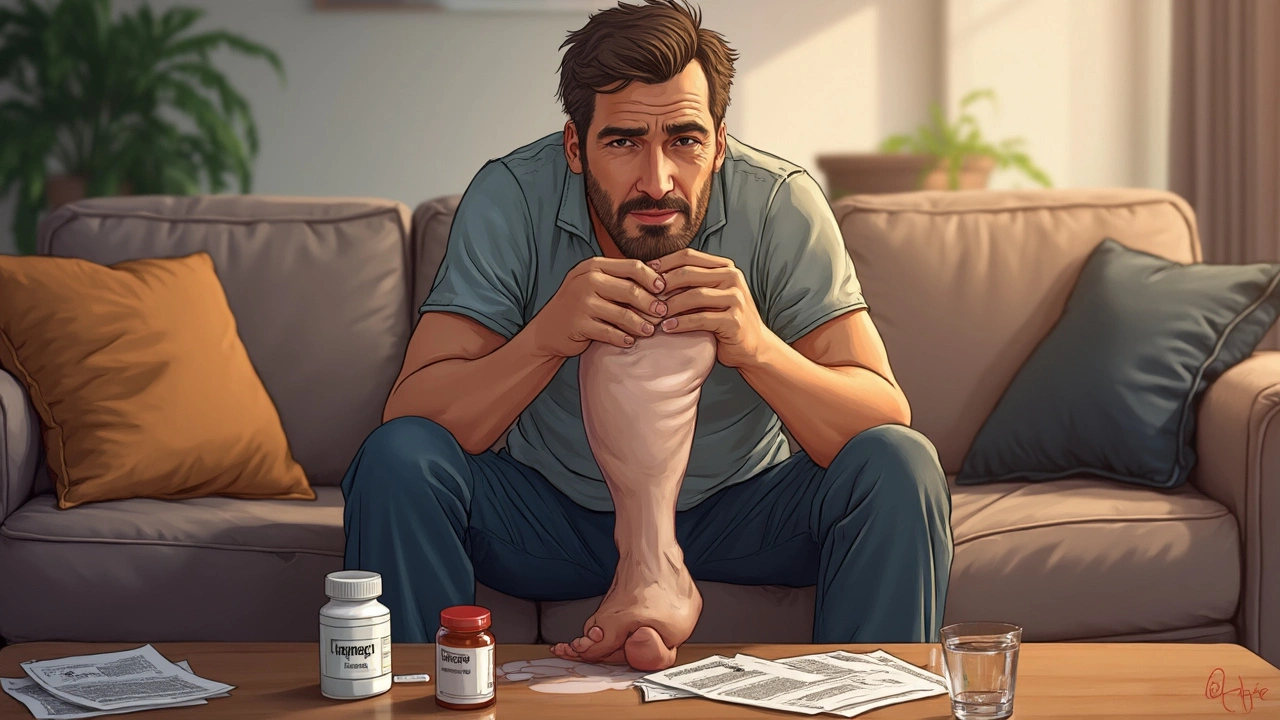Gout Flare Management: How to Handle Pain and Swelling Fast
When a gout flare hits, it can be unbearable. The sharp joint pain, swelling, and redness often show up suddenly, making your day tougher. Knowing how to manage these symptoms quickly can make a big difference, helping you get back on your feet sooner.
Most gout flares affect the big toe, but they can also hit ankles, knees, or other joints. Why does this happen? Basically, excess uric acid in your blood forms sharp crystals that irritate joint tissues, causing the classic flare or attack. The key is stopping inflammation and easing the pain as soon as possible.
Immediate Steps to Calm a Gout Flare
First off, try to rest the affected joint. Keep it elevated and avoid putting pressure on it. Applying a cold pack wrapped in a cloth for 15-20 minutes at a time can help reduce swelling and numb the pain.
Over-the-counter anti-inflammatory meds like ibuprofen or naproxen are usually the go-to option for many. They can bring relief, but be mindful of any allergies or health conditions and follow package instructions or your doctor’s advice carefully.
Sometimes, doctors prescribe stronger drugs like colchicine or corticosteroids for severe flares. These work by reducing inflammation quickly. But these meds often have side effects, so they should be used under medical supervision.
Long-Term Tips to Prevent Flare-Ups
Managing gout isn’t just about handling attacks; it’s about preventing them. Keep an eye on your diet and avoid things high in purines like red meat, shellfish, and alcohol, especially beer. Staying well-hydrated by drinking plenty of water also helps flush out uric acid.
Regular exercise and maintaining a healthy weight reduce pressure on joints and can lower uric acid levels. If your doctor suggests it, medications that lower uric acid, like allopurinol, might be part of your plan. These prevent new crystals from forming and cut down flare frequency.
Don’t wait until a flare gets unbearable to seek help. If you notice recurring pain or joint swelling, talk to your healthcare provider about the best strategies tailored for you. Managing gout is easier when you stay proactive and informed.
Prednisone vs Colchicine vs NSAIDs: Best Treatments for Gout Relief & Safety
What actually helps when your joints are screaming from a gout attack? Here’s a deep dive into how prednisone, colchicine, and NSAIDs stack up for gout relief. Discover which medicines work fastest, have the fewest side effects, and what real patients say. Read on before your next flare blindsides you.

